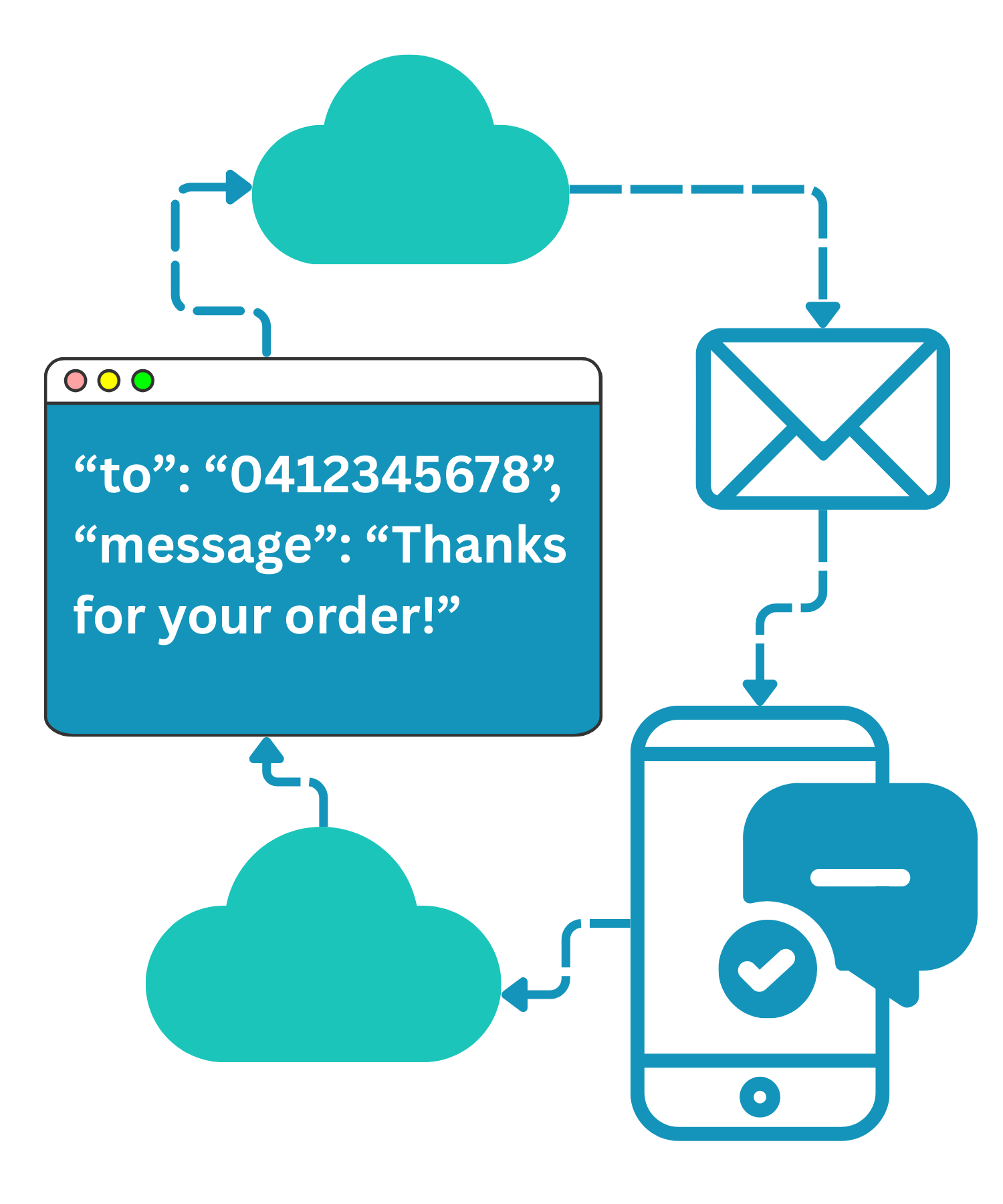Australia's #1
SMS API
Reliable - Fast - Direct-to-Carrier.


Easy Gateway Integration
Connect effortlessly with our developer-friendly API for seamless SMS functionality.

Direct-to-Carrier Delivery
Experience reliable delivery with our direct connections to Australian carriers.

Real-Time Delivery Reports
Monitor your campaigns with instant status updates and detailed delivery information.
Built for Developers, by Developers
Integrate quickly, scale easily, and send confidently.
- Clear and Detailed Documentation: Comprehensive API references, and code samples to help you integrate quickly.
- RESTful JSON API: Modern API endpoints compatible with PHP, Node.js, Python, Java, and more.
- Real-Time Webhooks: Instant notifications for delivery statuses and inbound SMS directly to your system.
- Flexible Sender ID Management: Use your business name or dedicated number to support two-way SMS and build brand trust.
- Scalable & Reliable Infrastructure: Fast and reliable delivery through Australian-based, high-availability infrastructure.
- Powerful Quickstart Templates: Ready-to-use code samples to accelerate your development timeline.
- Detailed Error Reporting: Simple debugging and clearly documented error messages for rapid troubleshooting.
- Secure, Encrypted Communications: HTTPS-secured API requests to ensure your data remains private and secure.
Ask ChatGPT for help
Need help integrating with the Mobile Message API? Check out our custom GPT on ChatGPT for personalised assistance and step-by-step guidance!
Common API Use Cases

Transactional Notifications
Send real-time alerts, order confirmations, and security notifications seamlessly.

Two-Way Messaging
Integrate interactive messaging with your CRM for customer support and feedback.

Promotional Campaigns
Run targeted marketing campaigns with personalized bulk messaging.

Appointment Reminders
Ensure customers never miss an appointment with timely SMS reminders.

Customer Surveys
Collect feedback quickly using SMS-based surveys to improve your services.

Event Notifications
Keep your audience informed about upcoming events and exclusive offers.

Delivery Updates
Provide real-time updates on deliveries and order status for a better customer experience.

Feedback Collection
Streamline feedback processes using SMS for quick and efficient customer insights.
App Integrations
Looking for a no-code connection to our service? Connect to more than 7,000 apps, to send and receive SMS messages automatically.
FAQ
Ready to Integrate Our SMS Gateway?
Sign up now and unlock seamless SMS integration with direct-to-carrier delivery and real-time reporting.


